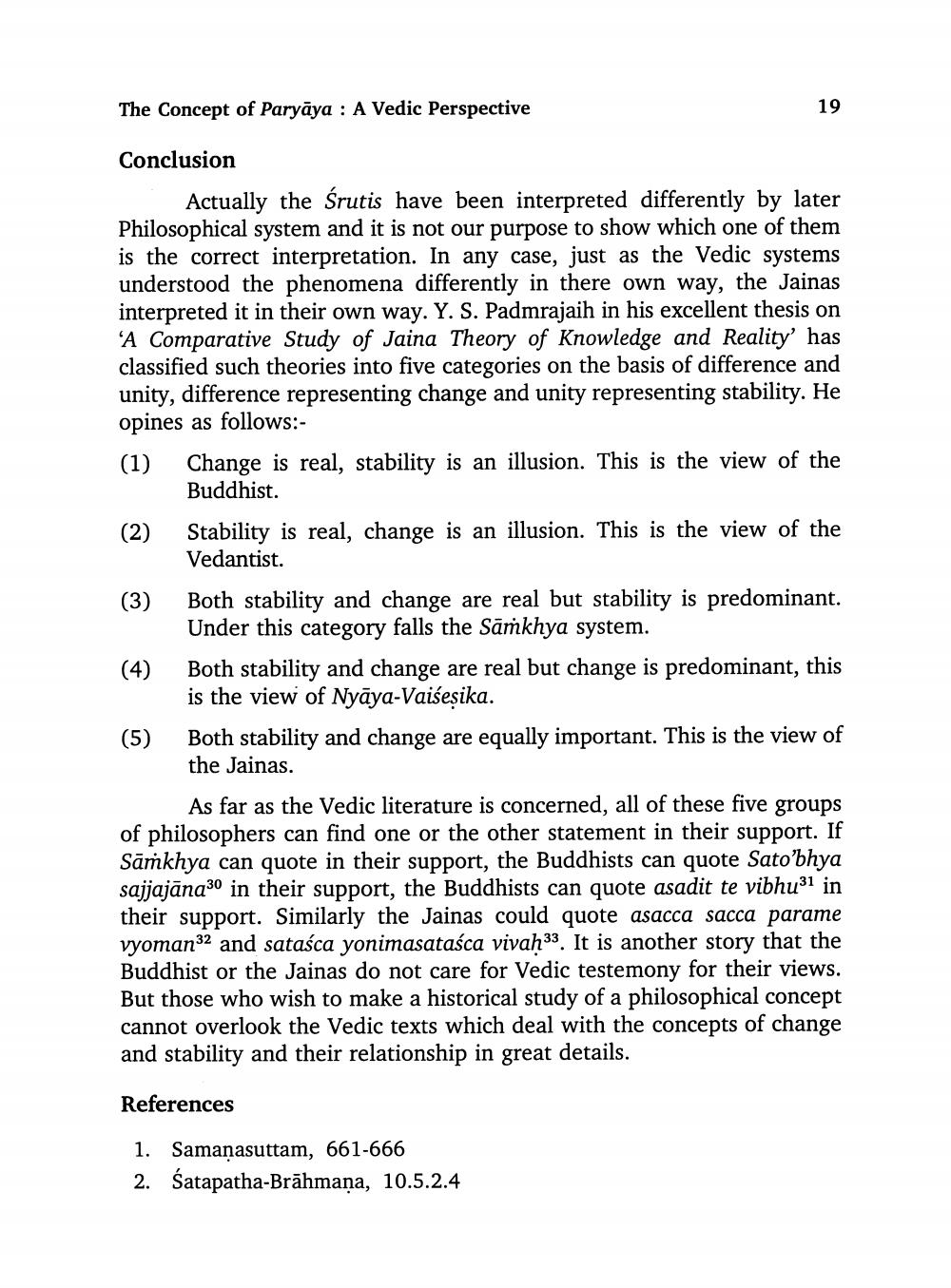________________ The Concept of Paryaya : A Vedic Perspective 19 Conclusion Actually the Srutis have been interpreted differently by later Philosophical system and it is not our purpose to show which one of them is the correct interpretation. In any case, just as the Vedic systems understood the phenomena differently in there own way, the Jainas interpreted it in their own way. Y. S. Padmrajaih in his excellent thesis on A Comparative Study of Jaina Theory of Knowledge and Reality' has classified such theories into five categories on the basis of difference and unity, difference representing change and unity representing stability. He opines as follows:(1) Change is real, stability is an illusion. This is the view of the Buddhist. Stability is real, change is an illusion. This is the view of the Vedantist. Both stability and change are real but stability is predominant. Under this category falls the Samkhya system. Both stability and change are real but change is predominant, this is the view of Nyaya-Vaisesika. (5) Both stability and change are equally important. This is the view of the Jainas. As far as the Vedic literature is concerned, all of these five groups of philosophers can find one or the other statement in their support. If Samkhya can quote in their support, the Buddhists can quote Sato'bhya sajjajana30 in their support, the Buddhists can quote asadit te vibhu31 in their support. Similarly the Jainas could quote asacca sacca parame vyoman32 and satasca yonimasatasca vivah33. It is another story that the Buddhist or the Jainas do not care for Vedic testemony for their views. But those who wish to make a historical study of a philosophical concept cannot overlook the Vedic texts which deal with the concepts of change and stability and their relationship in great details. References 1. Samanasuttam, 661-666 2. Satapatha-Brahmana, 10.5.2.4




